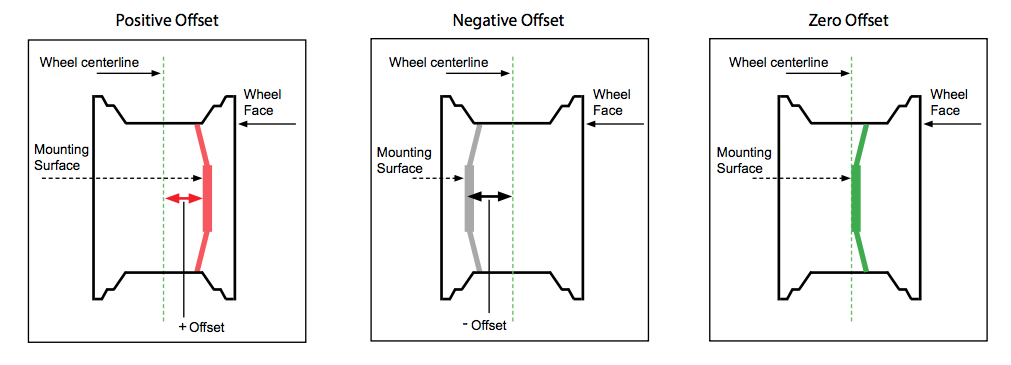Wheels and tires are an important part of differentiating your car from every other commuter vehicle on the road. Whether you are looking to ‘kill the game’ with an aggressive set of wheels and tires, or just change your car’s look, your wheel and tire choice will play a big part in making that transformation happen. Understanding wheel and tire sizes are key to pick the perfect setup you are trying to achieve, so we have broken down everything you need to know about deciding on the correct sizing the first time.
Wheel Size
Wheel sizing is defined by the wheels three dimensions: diameter, width, and offset. The diameter of the wheel is the total distance from one side of the rim flange to the other. If you have a 20 in wheel, then your wheel diameter is 20in, flange to flange. The common misconception surrounding the word ‘rim’ is that ‘wheel’ and ‘rim’ are interchangeable. In fact, ‘Rim’ refers to the actual flange around the outer edge of the wheel. You will find most commercial vehicles feature a ‘rim’ with a .5 degree angle for the flange, which meets the bead seat for the tire.
The wheel’s width is easy enough, too. The distance between the inside of inner flange to the inside of the outer flange is the width value of your wheel. Often, people will measure from the farthest points from side to side. You want to make sure you are measuring basically bead seat to bead seat for a proper width measurement.
Wheel offset is the distance from the face that mounts to your wheel hub from the middle of the wheel. If your wheel is 6in wide, and your offset is positive 20 (ET20) then your wheel will be ‘offset’ by 20mm from the dead center. Positive tells you which direction. A positive offset moves the mounting face farther away from the inner flange, a negative offset moves it towards the inner flange. Neutral offset, or ET0, is when the wheel hub mates with the wheel directly in the middle of the wheel. On a 6in wide wheel, the face would mount with three inches on either side, giving it a neutral offset.
Tire Size
Tire sizing is determined by the wheel dimensions. You can read the side of a tire to find out its specifications. The notation is as follows: P225/40R/18. While these numbers are arbitrary, the P denotes “passenger”, 225 is the millimeter width of the tire from inner to outer tread, 40 is the aspect ratio or ratio between the total diameter and width, and the 18 is your wheel diameter and the distance from bead to bead on the tire.

Speed Rating

Load Rating








